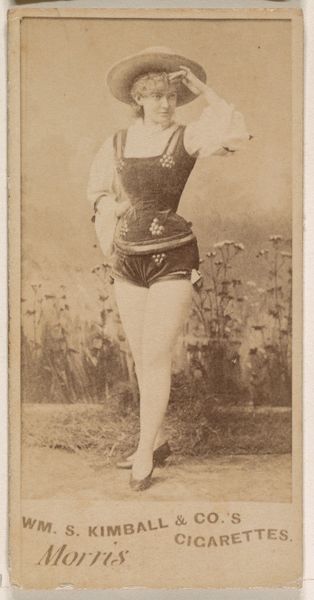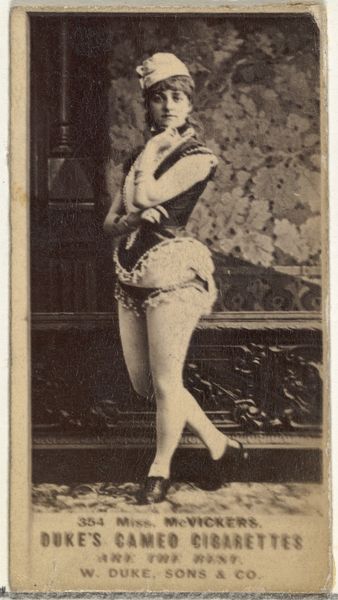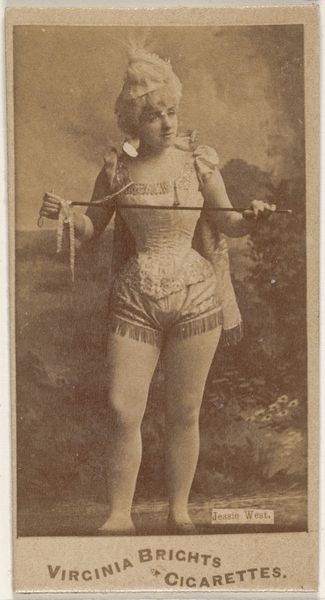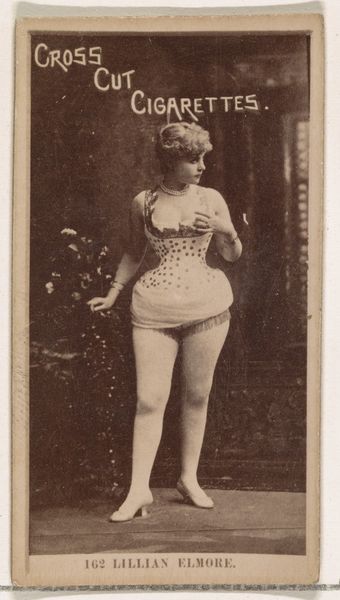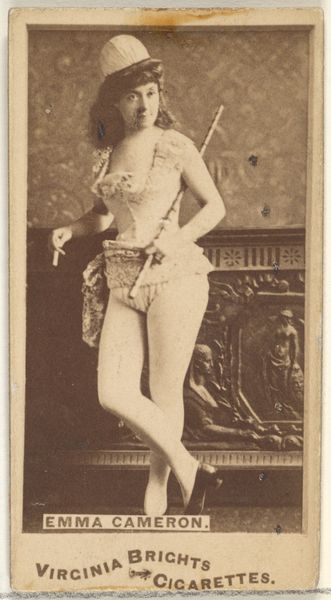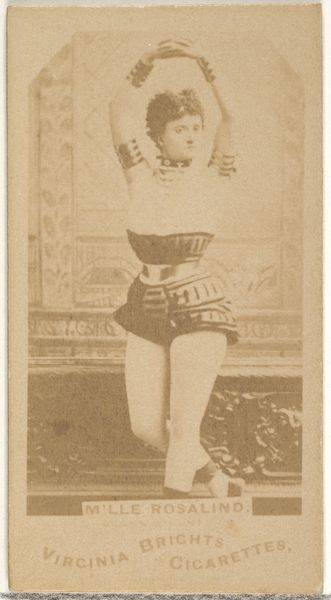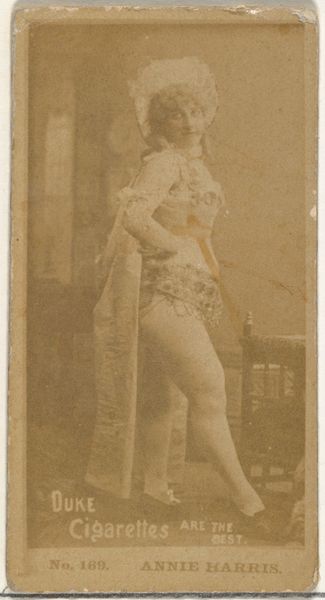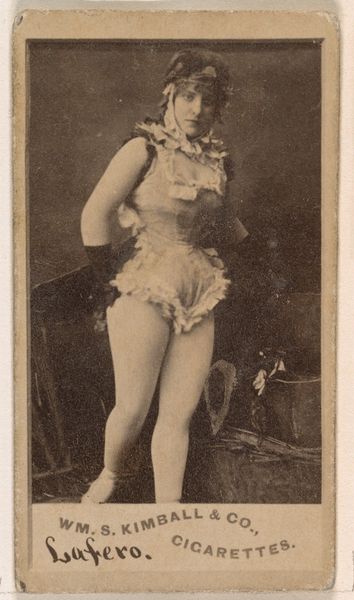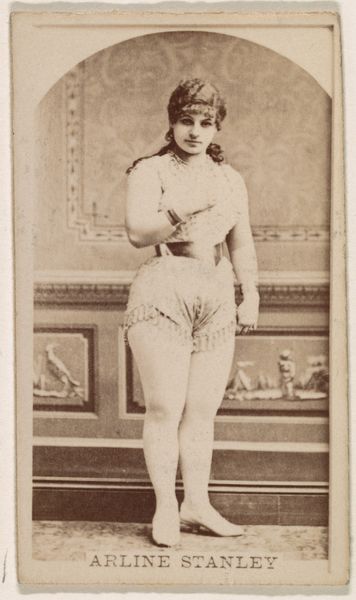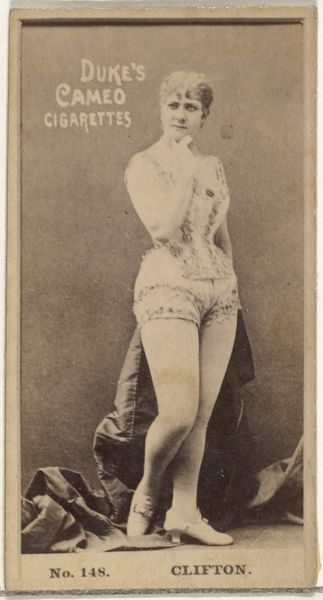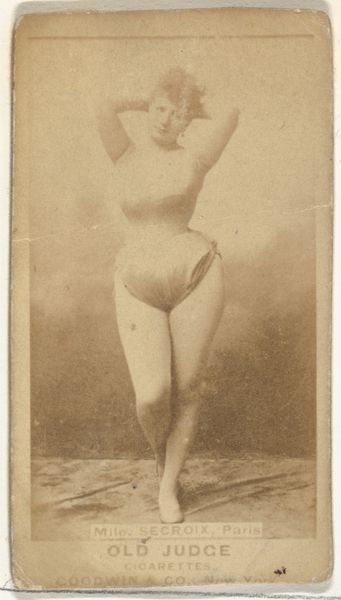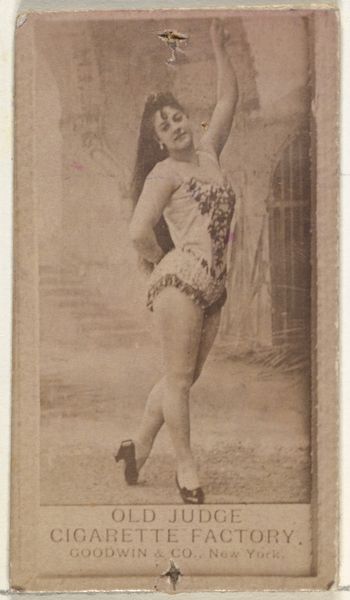
Annie Sutherland, from the Actors and Actresses series (N171) for Old Judge Cigarettes 1886 - 1890
0:00
0:00
drawing, print, photography, albumen-print
#
portrait
#
drawing
#
aged paper
#
toned paper
# print
#
figuration
#
photography
#
19th century
#
men
#
albumen-print
Dimensions: sheet: 2 11/16 x 1 3/8 in. (6.9 x 3.5 cm)
Copyright: Public Domain
Curator: Looking at this image, the first thing that strikes me is the overwhelming artifice. Everything about it, from the lighting to the costume, is so clearly constructed. Editor: Indeed. We’re viewing an albumen print dating from between 1886 and 1890. The piece is titled "Annie Sutherland, from the Actors and Actresses series (N171) for Old Judge Cigarettes," by Goodwin & Company. It is housed at the Metropolitan Museum of Art. Curator: The actress Annie Sutherland appears almost entombed within the restrictive fashions of the late 19th century. The hourglass silhouette and fussy details convey so much about the objectification of women's bodies at the time. We must recognize the problematic historical context of the male gaze. Editor: The image was originally created as a trade card, mass-produced to promote Old Judge Cigarettes. Consider its role within the burgeoning consumer culture and how the celebrity endorsements impacted not just commercial trends, but standards of feminine beauty, and the social currency of performance. Curator: Precisely! We must consider who profited from such images, the messages they subtly encoded about gender and class, and the broader social structures that allowed them to proliferate. The figure of the actress becomes a cipher onto which desires and anxieties are projected. How much agency did Annie Sutherland have in how her image was presented to the world? Editor: What’s equally striking is the performative nature of these portraits. How the backdrop creates theatrical associations. These images circulated broadly. Cigarette cards allowed these popular figures to leap across social lines to new audiences that might not have had regular access to legitimate stages or photographic studios. Curator: Absolutely, these commercial images can provide fascinating insights into the social fabric and gender dynamics of their era if we view them critically and explore their intersectional dimensions. I appreciate that. Editor: The details do, even now, allow us to open that kind of consideration. Thank you for the new perspectives, truly.
Comments
No comments
Be the first to comment and join the conversation on the ultimate creative platform.

